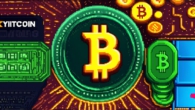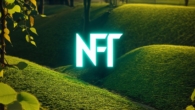
Is anyone still purchasing NFTs
Is Anyone Still Purchasing NFTs?
NFTs, or non-fungible tokens, have been making waves in the digital art world for years now. But are they still relevant today, especially with the rise of cryptocurrencies and other blockchain technologies? Let’s take a closer look at this topic and explore what NFTs are, how they work, and whether or not anyone is still purchasing them.
What Are NFTs?
NFTs are unique digital assets that can represent anything from art pieces to collectibles, such as domain names, music tracks, videos, and more. They are stored on blockchain technology, which ensures their authenticity and immutability. This means that once an NFT is created, it cannot be altered or destroyed, making it a valuable asset for creators and collectors alike.
One of the main advantages of NFTs is that they allow artists to monetize their work in new and innovative ways. For example, an artist can create a limited edition print of a painting and sell it as an NFT, allowing them to earn royalties every time it is resold. This not only incentivizes artists to create more work but also provides a sustainable income stream for them.
How Do NFTs Work?
NFTs are created and stored on blockchain technology, which is a decentralized digital ledger that records all transactions. When an NFT is created, it is assigned a unique identifier (hash) that is linked to the asset being represented. This hash is then stored on the blockchain, creating a permanent record of the ownership and authenticity of the NFT.
NFTs can be bought, sold, and traded like any other asset, with the value determined by supply and demand. They are typically sold using cryptocurrencies such as Bitcoin or Ethereum, which allows for a global marketplace for buying and selling NFTs.
Are NFTs Still Popular?
Despite some skepticism about the sustainability of NFTs, they have been gaining popularity in recent years. In 2021 alone, the global NFT market reached $432 million, with a compound annual growth rate (CAGR) of over 75%. This suggests that there is still a demand for NFTs and that their popularity is not declining.
One of the reasons for this is the increasing adoption of blockchain technology and cryptocurrencies. As more people become familiar with these technologies, they are also becoming more interested in NFTs as a way to invest in digital assets. Additionally, NFTs have been used successfully in various industries, such as gaming, fashion, and real estate, which has helped to increase their popularity and legitimacy.
Case Studies

Let’s look at some case studies to see how NFTs are being used and whether or not they are still relevant today:
1. Cryptokitties: In 2017, the game Cryptokitties was launched on Ethereum, which allowed players to buy, sell, and breed unique digital cats. The game quickly became popular and generated millions of dollars in revenue through the sale of NFTs. While the popularity of Cryptokitties has waned over time, it remains a successful example of how NFTs can be used in the gaming industry.
2. Beeple: In 2021, artist Beeple sold an NFT version of his digital artwork “Everydays: All the World’s Leading News,” which was created over 69 days and featured images from every news story in the world. The NFT sold for $69 million, making it one of the most expensive artworks ever sold at auction. This case study shows that NFTs can be used to sell high-value digital assets and attract attention from collectors and investors.
3. Christie’s: In 2021, Christie’s auction house sold its first piece of digital art as an NFT, “First Human Certified by AI,” which was created by artist Beeple.







